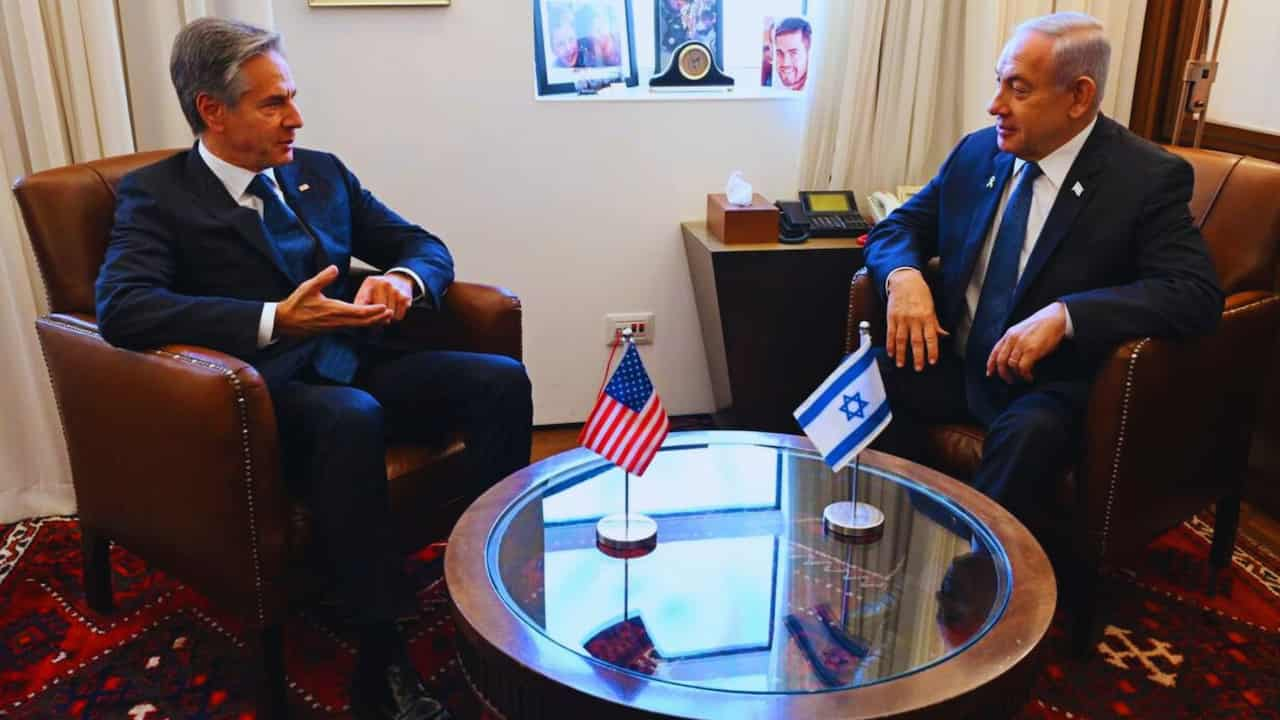Diplomatic Crossroads: Blinken’s Push for Gaza Aid Met with Netanyahu’s Hesitation
Breaking news from Jerusalem reveals mounting tensions between US and Israeli leadership as Secretary of State Antony Blinken presses for increased humanitarian aid to Gaza amid ongoing conflicts.
The high-stakes diplomatic meeting on Tuesday, October 22, 2024, highlighted growing concerns over the humanitarian crisis in the region.
In a pivotal meeting at the heart of Jerusalem, Prime Minister Benjamin Netanyahu faced direct pressure from Blinken regarding Israel’s approach to northern Gaza. The US Secretary of State specifically addressed the controversial “General’s Plan,” a strategy that has raised international concern about the treatment of Palestinians in the region.
A senior US official speaking on condition of anonymity revealed that Netanyahu and Strategic Affairs Minister Ron Dermer pushed back against claims that Israel was implementing the General’s Plan, which would effectively isolate northern Gaza.
Despite their private assurances, both officials stopped short of making any public statements rejecting the strategy, highlighting a pattern of diplomatic caution that has frustrated Washington.
The diplomatic discourse took place against the backdrop of Yahya Sinwar’s recent death, which US officials view as a potential turning point. “This could be a strategic opportunity,” noted a senior US administration official, emphasizing the possibility of renewed hostage negotiations and peace talks.
The humanitarian situation in Gaza remains dire, with aid levels hitting record lows according to UN data. Key developments include:
- The US is demanding increased humanitarian access to Gaza.
- Israeli officials have made private commitments to improve the flow of aid.
- There are worries about the use of siege tactics in northern Gaza.
- Ongoing military operations are affecting civilian populations.
The death toll in Gaza continues to rise, approaching 43,000 according to the latest health ministry figures. The crisis has displaced most of the 2.3 million population, with many seeking refuge in makeshift shelters.
Looking ahead, Blinken’s diplomatic mission continues with a scheduled visit to Saudi Arabia, highlighting the broader regional implications of the conflict. The US administration has established a clear 30-day timeline for noticeable enhancements in humanitarian aid delivery, threatening US military support if these demands remain unfulfilled.
The situation remains fluid as international pressure mounts for a resolution to the crisis. Despite private assurances from Israeli leadership, the gap between diplomatic discussions and public action continues to challenge US-Israeli relations at this critical juncture.
“The results are what matter,” emphasized a senior US official, reflecting the administration’s focus on concrete improvements rather than diplomatic promises.
The international community closely monitors signs of progress in addressing the humanitarian crisis and maintaining regional stability as the region finds itself at a critical juncture.
This developing story showcases the complex interplay between diplomatic pressure, humanitarian concerns, and strategic military objectives in one of the world’s most volatile regions. The coming weeks will be crucial in determining whether recent diplomatic efforts can translate into meaningful changes on the ground.
